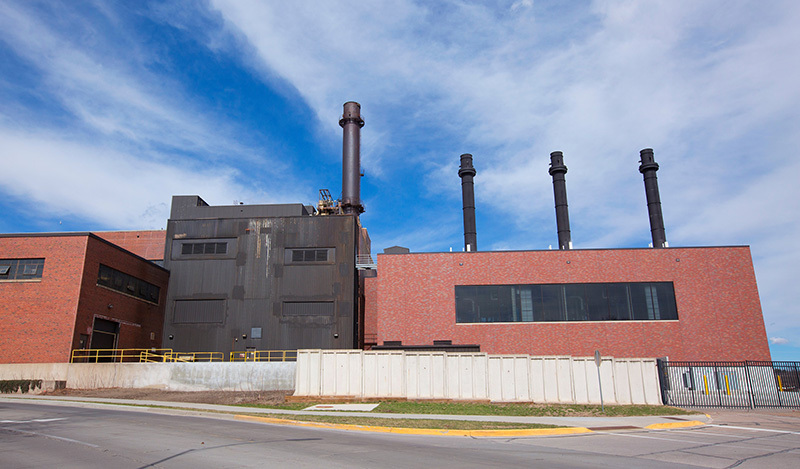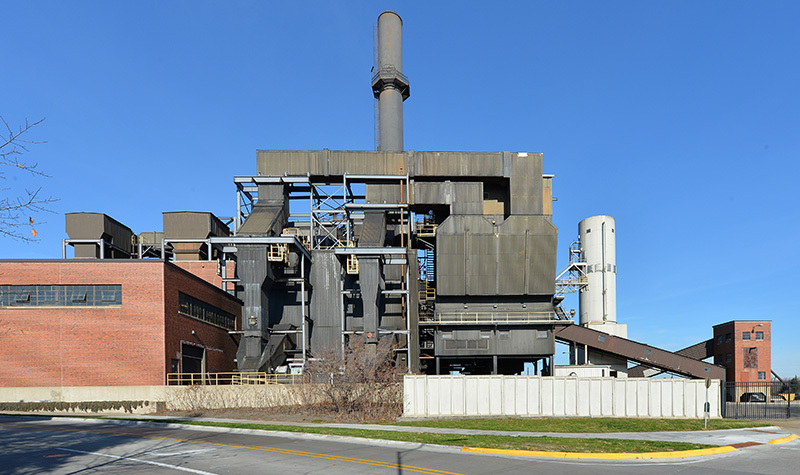Last spring, utility services completed a three-year project to replace three of its five coal-fueled boilers with natural gas boilers. The change cut the power plant's coal consumption nearly in half -- to about 75,000 tons annually. Even so, coal remains the single largest fuel source for campus energy production, as the following table shows.
|
Energy source |
FY16 (percent) |
FY12 (percent) |
|
Coal |
63 |
92 |
|
Natural gas |
28 |
2* |
|
Wind |
1.5 |
1.5 |
|
Purchased electricity |
7.5 |
4.5 |
|
Total |
100 |
100 |
*Partial year for first on-site boilers at Vet Med campus
Diversity in its fuel array is an important strategy at Iowa State, said utilities project engineer Lindsey Wanderscheid, and has its roots in a 2010 study that considered lots of possibilities. Fluctuations in fuel prices and availability drive decisions now about which boilers to use. Typically, two natural gas and one coal boiler are operating, with a second coal boiler used in the winter months. Ultimately, the goal is to keep the rates charged to campus users as level as possible, she said.
Natural gas burns more efficiently and with fewer emissions than coal, but its price historically is less stable than coal.
"We have much more flexibility now," Wanderscheid said. "If natural gas prices get out of whack, we could burn more coal to minimize campus rates."
The five boilers connect to existing steam, water and electrical systems in the power plant which produce steam (heat), electricity and chilled water (cooling) for the campus.
Cleaner energy
Wanderscheid said power plant emissions -- gases and particles -- are down by about 80 percent since the natural gas boilers went online. Iowa State also removes 28 percent less ash (a coal-burning byproduct) from campus now than it did four years ago. And despite perceptions about air pollution, she said Iowa State's two remaining coal boilers are among the cleanest of their kind and still have 15-20 years of use in them.
The utility service team routinely investigates alternative fuel options. She referenced a 2010 experiment in which Iowa State burned wood chips with coal in a 15 percent mix for several months and then obtained a state permit to burn that blend. However, high transportation costs for wood chips has prevented Iowa State from using that fuel source yet.
"When we're looking at alternative energy options, the fuel source has to be predictable and reliable or the state won't permit us to burn it," Wanderscheid said.
She said Iowa State and city of Ames representatives currently are studying possibilities for purchasing solar-generated electricity from a third party.

Photo by Christopher Gannon.
The March 2017 view (above) of the power plant includes less ash-handling structure and a new brick building (right) that houses three natural gas boilers. Pictured below is the same view of the power plant in November 2012, prior to the start of the boiler replacement project.

File photo by Bob Elbert.

